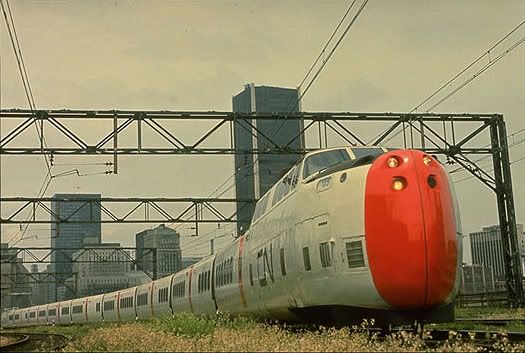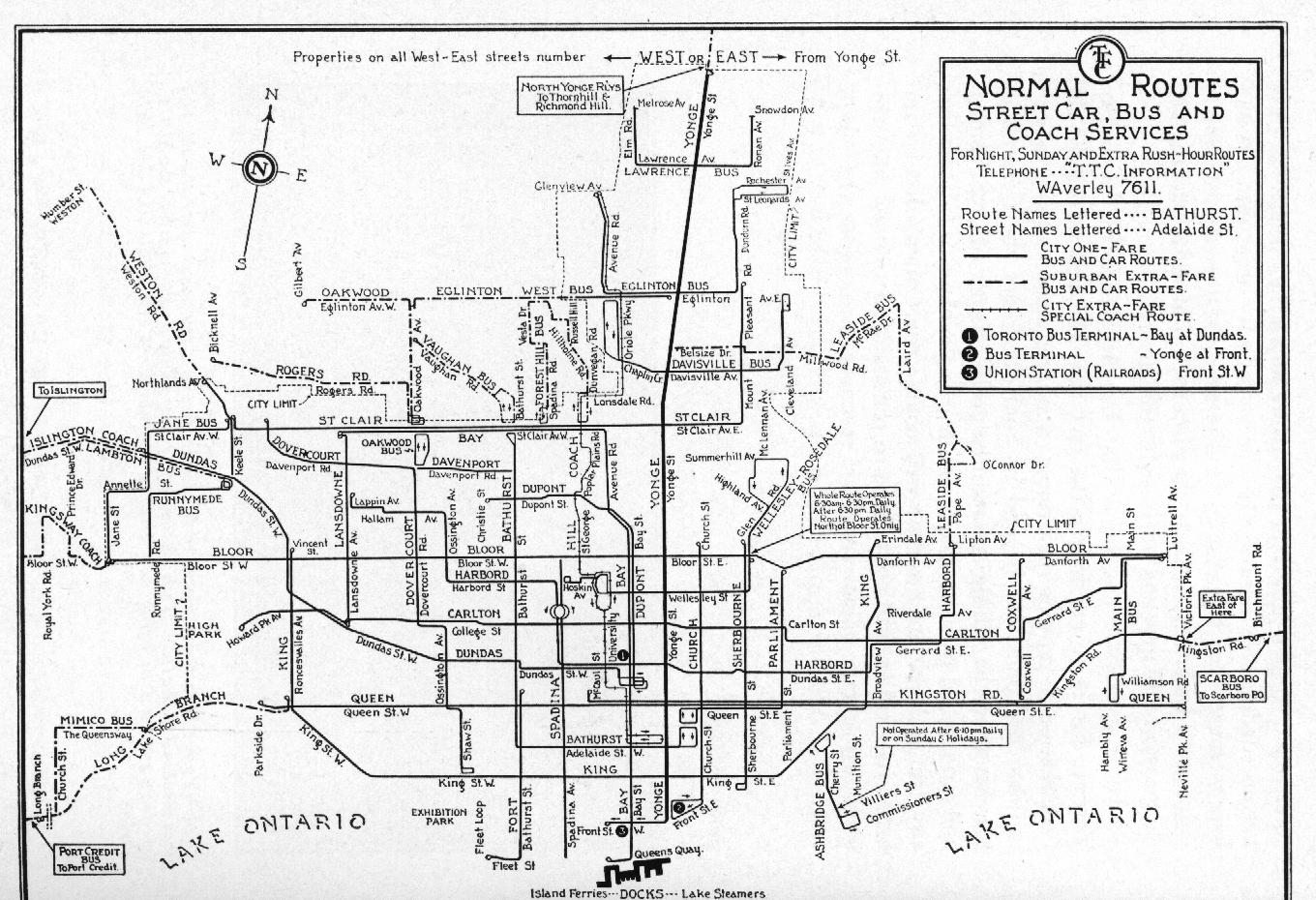Panzerfaust
Active Member
Now entering alternate universe...
Click here for map
Alright fellows, hold on, switching to another universe...
Click here for map
*****
So what exactly is this? This is just something I started working on when I was bored the other day, and it evolved into a thread idea. As I'm sure you all know, the TTC has had a lot of ideas for transit projects in the past, from bus routes that were never implemented all the way up to subway lines that lacked funding. But what if these things were implemented? How would it effect transit in the rest of the city, travel patterns, etc?
Well, in my first case, I'm assuming that, somehow, ICTS was implemented on the SRT without it being an utter disaster. That or the government didn't care and still wanted to show off their pet technology. This lead to funding for a twin line in Etobicoke (as was planned) running from Kipling to the Airport. The line was built on an elevated structure for the whole way, with provision made for a future extension into Malton.
I think that this would have had mostly positive benefits, though we'd be dealing with the same problems on that line today as we do with the SRT. There would be rapid transit to the airport, commutes from northern Etobicoke and Malton would be shortened significantly, and the extra platform at Kipling would actually be used.
My second idea is an alternate view of Scarborough. What if the TTC hadn't given in and chosen ICTS for the SRT, instead using LRT? What you see is my take on it, assuming that funding stayed consistent over the last 30 years or so. It's pretty much Steve Munro's wet dream. With LRT's low cost and versatility, expansions are constant. Using a combination of dedicated and on-street rights-of-way, LRT can put most of Scarborough's population within a short bus ride of rapid transit. It's quite honestly what I wish we could have today.
Now it's your turn. Take a point in Toronto's transit history and twist it a little, whether for good or for bad. You don't have to think whatever you're doing is a good idea, as this is just for fun. Let me repeat that: THIS IS FOR FUN. Please don't destroy this thread with "OMG THAT COULD NEVER HAVE HAPPENED" or "THERE WAS NEVER ENOUGH FUNDING FOR THAT". I just figured that for once we can leave the realm of the real behind and think about what could have happened.
This isn't limited to Toronto, by the way. It's more of a general GTA thing. This also isn't a fantasy maps thread, as I know we have one of those buried somewhere. This isn't about what we're going to do in the future, it's about what we could have done in the past.
Toronto Star
May 9th, 1989
Etobicoke RT Opens to Great Fanfare
The official opening ceremonies for the new Etobicoke RT were held yesterday at Kipling subway station. The new line, running from Kipling Station to the Airport, uses the same ICTS technology which has been used to great effect on the Scarborough RT. Representatives from all levels of government were on hand for the ribbon cutting, which took place at 11 AM, followed by media trips on the new line. Official service begins tomorrow, with the first trains departing Kipling at 5:34 AM and the Airport at 5:49 AM... [continued]
Click here for map
Alright fellows, hold on, switching to another universe...
For public release:
Progress Report: Scarborough LRT McCowan North Extension
January 12th, 2007
The Scarborough LRT McCowan North extension, forecasted to run from the Finch Hydro Corridor north to Steeles Avenue, is currently being completed on schedule. The centre-road right of way is currently being paved, and completion is expected for August of 2007. This will complete the 30 year Scarborough LRT plan of 1978 six months ahead of schedule...
Click here for map
*****
So what exactly is this? This is just something I started working on when I was bored the other day, and it evolved into a thread idea. As I'm sure you all know, the TTC has had a lot of ideas for transit projects in the past, from bus routes that were never implemented all the way up to subway lines that lacked funding. But what if these things were implemented? How would it effect transit in the rest of the city, travel patterns, etc?
Well, in my first case, I'm assuming that, somehow, ICTS was implemented on the SRT without it being an utter disaster. That or the government didn't care and still wanted to show off their pet technology. This lead to funding for a twin line in Etobicoke (as was planned) running from Kipling to the Airport. The line was built on an elevated structure for the whole way, with provision made for a future extension into Malton.
I think that this would have had mostly positive benefits, though we'd be dealing with the same problems on that line today as we do with the SRT. There would be rapid transit to the airport, commutes from northern Etobicoke and Malton would be shortened significantly, and the extra platform at Kipling would actually be used.
My second idea is an alternate view of Scarborough. What if the TTC hadn't given in and chosen ICTS for the SRT, instead using LRT? What you see is my take on it, assuming that funding stayed consistent over the last 30 years or so. It's pretty much Steve Munro's wet dream. With LRT's low cost and versatility, expansions are constant. Using a combination of dedicated and on-street rights-of-way, LRT can put most of Scarborough's population within a short bus ride of rapid transit. It's quite honestly what I wish we could have today.
Now it's your turn. Take a point in Toronto's transit history and twist it a little, whether for good or for bad. You don't have to think whatever you're doing is a good idea, as this is just for fun. Let me repeat that: THIS IS FOR FUN. Please don't destroy this thread with "OMG THAT COULD NEVER HAVE HAPPENED" or "THERE WAS NEVER ENOUGH FUNDING FOR THAT". I just figured that for once we can leave the realm of the real behind and think about what could have happened.
This isn't limited to Toronto, by the way. It's more of a general GTA thing. This also isn't a fantasy maps thread, as I know we have one of those buried somewhere. This isn't about what we're going to do in the future, it's about what we could have done in the past.








